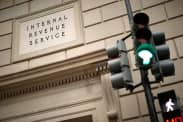Americans are ready to splurge again after the government sent out $1,400 checks, but they are likely to spread the money around a lot more than they did after the prior two rounds of stimulus.
When the government mailed out $1200 checks last May, households used most of the cash mainly to buy goods such as new cars and trucks, furniture and clothes, government data showed.
They also went back to their doctors and dentists after avoiding them early in the pandemic, but spent relatively little on other major services involving personal care, travel, leisure and hospitality or entertainment.
Americans shifted their purchases in January after getting $600 stimulus checks. They bought more consumer electronics, recreational goods, appliances and takeout food, among other things.
The third wave of stimulus checks is arriving at a time when the weather is warming, coronavirus cases on are the decline and restrictions on the economy are mostly loosened.
The result: Americans who’ve been stuck at home are ready to hit the bar, attend a ball game, visit a museum, take a day trip or go on a long vacation, especially if they’ve been vaccinated.
“We should experience an economic jailbreak in coming months,” said Phil Orlando, chief equity market strategist at Federated Hermes. “People have been stuck at home for a year, with serious cabin fever and money burning a hole in their pockets.”
With so many options now available, consumers can spend their money in a variety of ways that were not available through much of the pandemic. Many businesses recognize the new reality and don’t expect the same bounce in sales they racked up after previous government stimulus.
“We do think that’ll be probably a smaller impact … those customers have more options to spend money on,” said Chief Executive Bruce Thorn of the discount retail chain Big Lots
BIG,
Walmart Inc.
WMT,
“I do think people will spend probably a little differently,” he said at a recent Raymond James Institutional Investors Conference . “[General merchandise] will be important to people, but also people are ready to go on vacations and do other things like that.”
That’s good news for hotels, airlines, vacation resorts, beach towns and the like, but they were badly scarred by the pandemic and are unlikely to see business return to precrisis level until the coronavirus has largely disappeared.
Not all the money will be spent, either.
Read: Unemployment claims jump to one-month high as Texas applications surge
Some analysts say Americans are likely to use 50% or more of the stimulus money to pay down credit cards or other bills or simply stick the money in the bank in case the pandemic comes back with a vengeance.
See: A visual look at how an unfair pandemic has reshaped work and home
Look at what happened in January. An already high U.S. savings rate jumped to 20.5% from 13.4% in December — triple the pre-crisis average— according to data from the U.S. Commerce Department.
If that’s the case, the latest stimulus won’t deliver as big a boost to the economy as it might have earlier in the crisis despite its large size. The stimulus checks to the public amount to a whopping $420 billion.
Make no mistake, though. The economy is going to get a big shot in the arm. The Fed and most Wall Street
DJIA,
The accelerating rebound just didn’t gain much traction in February due to unusually poor weather and a temporary lapse in government stimulus.
The government’s monthly report on consumer spending, due on Friday, is likely to show a small decline after a stimulus-fueled 2.4% surge in January. Spending should rebound strongly in March and April, however.
Read: U.S. retail sales drop 3% in February before new round of stimulus checks
More important to investors this week is the latest reading on inflation.
Read: Consumers pay higher prices, CPI shows, as inflation creeps up
And: Inflation worries are back. Should you worry?
The Federal Reserve’s preferred PCE price gauge probably won’t show a big increase in February, but inflation is on the rise again after being squelched early in the pandemic. PCE-based inflation is rising at a 1.5% yearly pace and it’s expected to top 2% later this year.
The return of inflation worries is pushing interest rates
TMUBMUSD10Y,
“Certainly bond investors are heavily leaning to the view that regardless of current readings, the inflation risks are tilting higher,” said chief economist Douglas Porter of BMO Capital Markets.







